Those people and organisations that study labour trends and labour markets will be assessing the impact of COVID-19 for many years to come. Did the COVID-19 pandemic create new work arrangements, or did it just accelerate trends that were already in progress? Will the pandemic lead to lasting changes in our society, or will we return to our pre-pandemic world once public health restrictions have eased? These are questions that many will be trying to answer.
What we can say with confidence is that COVID-19 had dramatic impacts on the occupational lives of nearly all Canadians. In May of 2020, Canada’s unemployment rate hit a high of 13.7%, and it has yet to recover to its pre-pandemic rates of around 6% [1]. The adoption of work-from-home mandates to increase social distancing and the permanent adoption of the home office for many workers has led to high office space vacancies, reported at 13% in some places earlier in 2021 [2].
So what about the trucking industry? While the pandemic created an increased awareness of transportation and logistics in mainstream society, the industry itself has carried on through the pandemic struggling with labour issues that predated COVID-19. The labour issues I am referring to here are shortages of skilled workers: drivers, technicians, and office staff.
The American Transportation Research Institute (ATRI) conducts an annual survey within the USA’s trucking industry, and the driver shortage made the top ten list for 2020; it also, though, was on the top ten list of issues for 2005 when ATRI started this annual survey [3]. The driver shortage has been perceived to be a common problem for carriers in the USA for a long time, yet the survey results suggest that efforts aimed at solving this problem have not brought on the changes needed to bring about a belief that there is an adequate supply of drivers. I believe that the concerns are the same within Canadian carriers.
Labour Shortages: Industry versus Company
What is a labour shortage? In the simplest of terms, it is a situation where there are not enough workers (eg. employees, independent contractors, dependent contractors, etc.) available for or willing to work to meet the needs of employers. If a business is actively trying to hire for a position and cannot fill the position with a suitable candidate, the business will probably say they are experiencing a labour shortage.
Labour shortages in an industry are not the same as labour shortages in a single company, though. According to Investopedia, a shortage means a “condition where the quantity demanded is greater than the quantity supplied at the market price” [4]. If a company cannot find enough truck drivers, it does not mean that there is a labour shortage. It might just mean that the carrier in question does not offer an employment deal that is as good as what their competitors are offering.
If an industry, on the other hand, cannot fill its vacant positions, then the industry is experiencing a labour shortage. Trucking HR Canada says that, as of March of 2021, there are nearly 20,000 vacant truck driver positions in Canada and even if all currently qualified drivers were to fill these, 11,000 vacancies would remain [5]. What this means is that Canada’s trucking industry is indeed experiencing a shortage of labour for driving positions.
And it isn’t just drivers that are in high demand. Before the current pandemic, the industry has reported shortages of heavy-duty truck technicians [6], and many jobs in general throughout Canadian society are going unfilled as a result of a shortage of workers [7]. For example, the Centre for Future Work has suggested that vacancies in the restaurant and hospitality industries are not the result of a genuine scarcity of labour but are instead the result of undesirable positions people do not want to fill [8]. Perhaps the trucking industry is experiencing, in general, the same sorts of problems – those in a position to choose between industries are not considering trucking because the potential benefits of employment do not outweigh the demands workers experience in trucking jobs.
Individual trucking companies mostly look within the industry to attract candidates; those that require previous industry experience have no choice. However, the trucking industry as a whole competes with other industries to attract labour, and labour shortages suggest that the industry either does not offer or does not appear to offer employment opportunities that are as good as other industries.
Labour Mobility
Labour and occupational mobilities are key concepts carriers and the industry as a whole need to understand. Labour mobility (or geographic mobility) refers to the ability of workers to move around within an industry or between industries while maintaining their current occupation [9]. Occupational mobility refers to the ability of workers in one type of job to move into a different type of job [9].
Many workers in the trucking industry enjoy high geographic labour mobility. Drivers, for example, can easily move between carriers once they have a small amount of safe driving experience. As a result, it is common to find professional driver résumés that show varied and transient past work experience and for such a past to not be a considerable concern to employers.
Workers in trucking also enjoy a high degree of occupational mobility. Many diesel technicians were once drivers and vice versa. Many commercial vehicle enforcement officers were once drivers and may one day transition into safety and compliance management at a trucking company, thus ending their public service. In our society in general, trying one’s hand at multiple occupations is common.
Labour and occupational mobility are empowering for a worker because they represent options. A carrier’s challenge is to be the best option available; trucking as a whole has the challenge of being a destination industry instead of an industry often overlooked or passed over.
The Role of Youth
Youth naturally represents what is next in any industry and society. Even though trucking is an industry that takes strong advantage of immigration programs like Canada’s Temporary Foreign Workers’ Program [10], younger workers will be needed to fill positions left vacant through retirements.
No generation is the same as the one before it. What youth today consider gainful employment is different from what those nearing retirement considered gainful employment when they were youth. Generations should not ask the other to conform completely to their standards, but should instead engage in dialogue aimed at identifying common ground and making realistic changes to ensure the sustainability of trucking occupations.
Such thoughts are nothing new. Trucking HR Canada has labour market information available for employers to attract and retain millennials [11]. Alberta Motor Transport Association, through their Road Knights program and other community outreach engagements, promotes the value of trucking to youth browsing through different career options [12].
Attracting candidates is obviously important to address a labour shortage, but retention is critical for long-term success. In order to retain youth and other underrepresented people, the trucking industry will have to adapt to meet the demands of these workers. As workers retire and companies grow, countless torches need to be passed to newer workers who are interested in carrying them.
Summary
An optimistic mindset that is happy to promote the positives in trucking without ignoring and addressing the negatives is needed to ensure this industry’s sustainability. Fortunately, there is no shortage of such people who see opportunities in transportation. Young people interested in starting their careers would do well to choose transportation since the exodus of ageing workers can provide for rapid career advancement without the intense competition of other industries. The trick now is to find a way for trucking to tell this story.
References
1 – “Chart 2 Unemployment rate falls”, Statistics Canada, accessed September 19th, 2021, https://www150.statcan.gc.ca/n1/daily-quotidien/210709/cg-a002-eng.htm
2 – “How COVID-19 created a buyer’s market for office space”, Tara Deschamps, Canadian Broadcasting Corporation, accessed September 19th, 2021, https://www.cbc.ca/news/business/covid-office-space-1.5983851
3 – “Top Industry Issues”, American Transportation Research Institute, accessed September 19th, 2021, https://truckingresearch.org/atri-research/top-industry-issues/
4 – “Shortage”, James Chen, Investopedia, accessed September 19th, 2021, https://www.investopedia.com/terms/s/shortage.asp
5 – “Understanding Canada’s truck driver shortage”, Angela Splinter, trucknews.com, accessed September 19th, 2021, https://www.trucknews.com/blogs/understanding-canadas-truck-driver-shortage/
6 – “Targeting Technicians, Part 1: Trucking industry faces major shortage, opportunities for diesel mechanics”, Lucas Deal, Commercial Carrier Journal, accessed September 19th, 2021, https://www.ccjdigital.com/business/article/14938107/the-trucking-industry-faces-major-diesel-mechanic-shortage
7 – “The pandemic worsened an age-old Canadian problem — youth unemployment. Will a labour shortage help?”, Jacob Lorinc, Toronto Star, accessed September 19th, 2021, https://www.thestar.com/business/2021/07/27/the-pandemic-worsened-an-age-old-canadian-problem-youth-unemployment-will-a-labour-shortage-help.html
8 – “Is There Really a Shortage of Labour?”, Centre for Future Work, accessed September 19th, 2021, https://centreforfuturework.ca/2021/07/28/is-there-really-a-shortage-of-labour/
9 – “The Economics of Labor Mobility”, Brent Radcliffe, Investopedia, accessed September 19th, 2021, https://www.investopedia.com/articles/economics/09/labor-mobility.asp
10 – “CTA applauds permanent residency path, wants employers certified”, John G Smith, trucknews.com, accessed September 19th, 2021, https://www.trucknews.com/transportation/cta-applauds-permanent-residency-path-wants-employers-certified/1003151022/
11 – “Millenials Have Drive 2”, Trucking HR Canada, accessed September 19th, 2021, https://truckinghr.com/wp-content/uploads/2019/09/Millennials-Have-Drive-2.pdf
12 – “About the AMTA Road Knights”, Alberta Motor Transport Association, accessed September 19th, 2021, https://amta.ca/what-we-do/road-knights/





Comments are closed